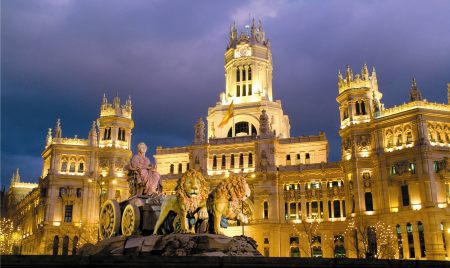
by Sue Hubbard
The day I arrived in Madrid with a bunch of international journalists, courtesy of the Spanish Tourist Board, there was a downpour. The streets glistened with puddles. As people scurried beneath umbrellas the city resembled a wet northern English town rather than the elegant Spanish capital about to host the 29th International Contemporary Art Fair, ARCO, where 218 galleries from 25 countries all hoped to buck the global recession. There were dinners galore that went on for many courses, and speeches that went on for even longer. The guests included girls in designer tops, short skirts and very expensive high heels, who didn’t necessarily look as though they knew a Picasso from a Picabia, or a Soutine from a Sarah Lucas but who certainly added a touch of glamour and class.
By definition art fairs are eclectic; selling everything from the sublime to the overpriced and ridiculous. Trying to detect trends is a mug’s game. Chillidas and Mirós jostled with contemporary art stars such as Ed Ruscha and Anish Kapoor, while there were plenty of dealers promoting young unknowns. Galleries from Seoul, St. Petersburg and Berlin rubbed shoulders with those from France, Spain, Ireland and Britain, but this year the spotlight was on Los Angeles. The idea was to showcase a cross-section of what’s happening in that city, replacing the fair’s previous focus on a country. But here again, there was no overarching trend. Diversity was the buzz word, mirrored by the 17 galleries that range from the established to new kids on the block.
Art fairs beg the question as to what all this stuff is for. Aesthetic expression, investment or entertainment? You can take your pick. Art has become the new religion filling gaps left by other forms of more conventional belief. Dealers are there to proselytise to the unconvinsed, to act as missionaires among the philistines. Certain works pulled the crowds. An audience gathered around Eugenio Merino’s tower of life-sized figures: a Rabbi standing on the shoulders of a Christian cleric, standing on top of a praying mullah, at the ADN Gallery from Barcelona. Like some Madame Tussaud’s wax work effigy it had an ‘oh look at that’ sort of curiosity but rather less appeal than the uncanny Dead Dad in a similar vein by the British artist Ron Muek on which it seemed to have been based. Elsewhere people stopped by Japanese artist Kaoru Katayama’s video at the Galeria Thomas March from Valencia, drawn by a voyeuristic fascination to a video of couples in an LA gay bar dancing to chirpy Latin music, their expressions deadpan under their cowboy hats.
Read more »
